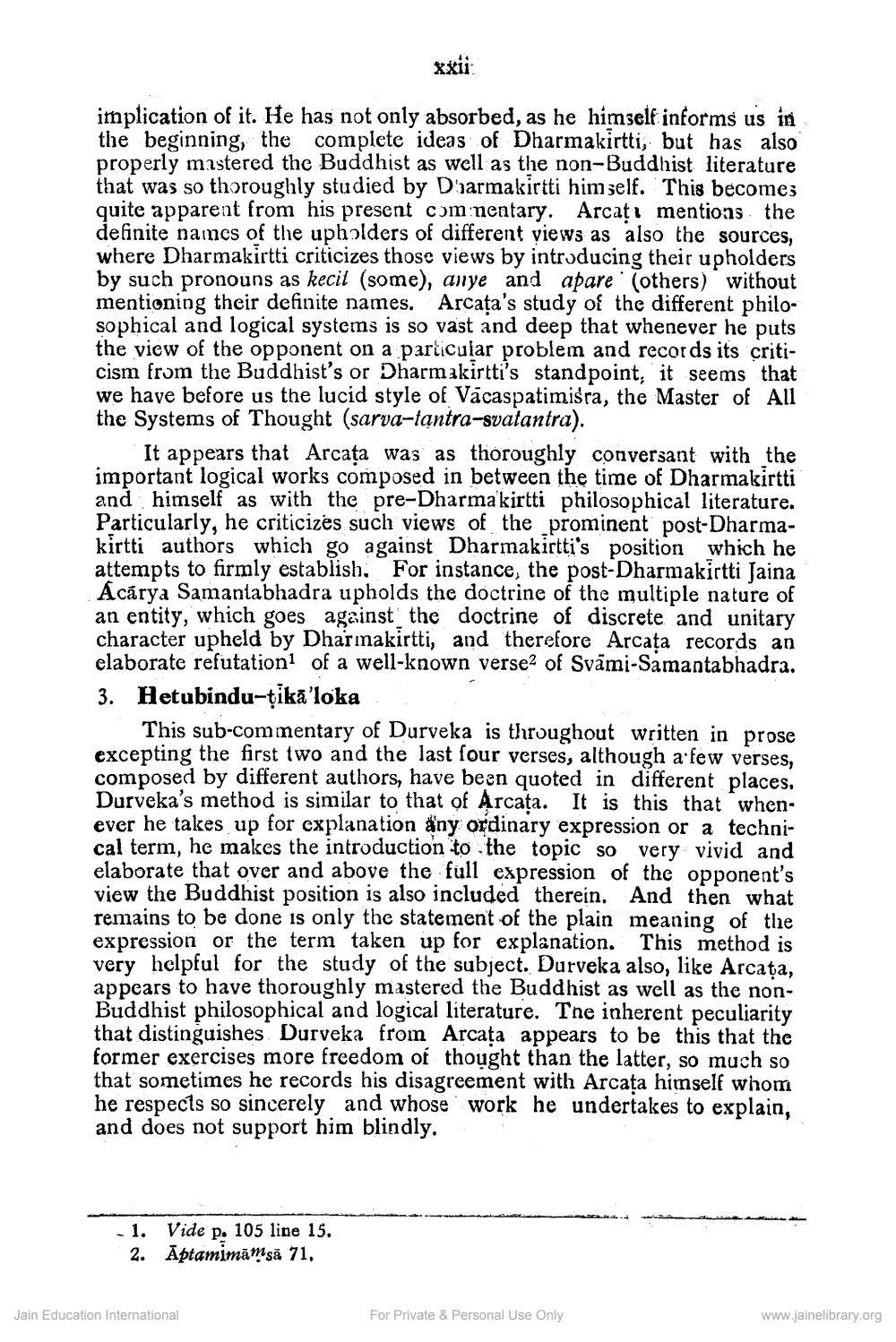________________
xxii
implication of it. He has not only absorbed, as he himself informs us in the beginning, the complete ideas of Dharmakirtti, but has also properly mastered the Buddhist as well as the non-Buddhist literature that was so thoroughly studied by Dharmakirtti himself. This becomes quite apparent from his present commentary. Arcat mentions the definite names of the upholders of different views as also the sources, where Dharmakirtti criticizes those views by introducing their upholders by such pronouns as kecil (some), anye and apare (others) without mentioning their definite names. Arcata's study of the different philosophical and logical systems is so vast and deep that whenever he puts the view of the opponent on a particular problem and records its criticism from the Buddhist's or Dharmakirtti's standpoint, it seems that we have before us the lucid style of Vacaspatimisra, the Master of All the Systems of Thought (sarva-tantra-svatantra).
It appears that Arcata was as thoroughly conversant with the important logical works composed in between the time of Dharmakirtti and himself as with the pre-Dharma'kirtti philosophical literature. Particularly, he criticizes such views of the prominent post-Dharmakirtti authors which go against Dharmakirtti's position which he attempts to firmly establish. For instance, the post-Dharmakirtti Jaina Acarya Samantabhadra upholds the doctrine of the multiple nature of an entity, which goes against the doctrine of discrete and unitary character upheld by Dharmakirtti, and therefore Arcata records an elaborate refutation1 of a well-known verse2 of Svämi-Samantabhadra. 3. Hetubindu-țikā 'loka
This sub-commentary of Durveka is throughout written in prose excepting the first two and the last four verses, although a few verses, composed by different authors, have been quoted in different places. Durveka's method is similar to that of Arcata. It is this that whenever he takes up for explanation any ordinary expression or a technical term, he makes the introduction to the topic so very vivid and elaborate that over and above the full expression of the opponent's view the Buddhist position is also included therein. And then what remains to be done is only the statement of the plain meaning of the expression or the term taken up for explanation. This method is very helpful for the study of the subject. Durveka also, like Arcata, appears to have thoroughly mastered the Buddhist as well as the nonBuddhist philosophical and logical literature. The inherent peculiarity that distinguishes Durveka from Arcata appears to be this that the former exercises more freedom of thought than the latter, so much so that sometimes he records his disagreement with Arcata himself whom he respects so sincerely and whose work he undertakes to explain, and does not support him blindly.
1. Vide p. 105 line 15. 2. Aptamimāmsā 71,
Jain Education International
For Private & Personal Use Only
www.jainelibrary.org




